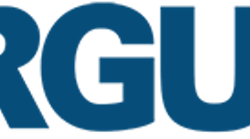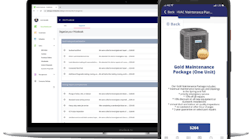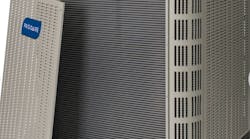During a recent phone conversation, the CEO of a national distribution company recently told me how one of their branch offices in California had taken a $97,000 hit from a customer who couldn't secure needed financing to continue in business. The company's sales were down 18 percent in 2008, and the branch manager had exceeded the customer's credit line of $25,000 in his attempt to keep his sales figures up. The CEO went on to say that at a 5 percent pretax profit, the company will have to make close to $2 million in new sales just to break even, and that's if they all pay on time. This company can survive one $97,000 hit, but if any more like it are hiding in the woodwork, it may prove too much to bear. As for the branch manager, he's history, along with the branch and all those the branch once employed.
During an economic downturn, collecting on accounts receivable becomes more important than ever. At the same time, it also becomes more difficult as customers experience cash flow crunches of their own.
We are faced with a down stock market, reduced consumer spending, dropping wholesale prices and low business confidence levels. Financing is hard to get for everyone; manufacturers, wholesalers and the businesses that buy from them are all in the same boat when it comes to securing short-term money while they make sales and wait for their customers to pay. Customers who use to pay on time are now paying 30, 60 or more days late … if at all.
Again and again, companies hear from past-due customers that once their customers pay them what they owe, if ever, they will pay.
A delay in getting paid has always existed due to nature of downline customers needing time to add value to whatever product or service they buy and then needing more time to sell and to be paid by their own customers; now a growing problem is that those downline sales are down, they're not happening, and the entire supply chain is feeling the effect.
The house is on fire, or in the case of wholesalers, the warehouse is on fire. This is not the time to form a committee to determine who's to call the fire department; it's time to man the buckets and for all hands to work together like never before. And this includes CEOs and senior managers.
A/R, accounts receivable, short-term money due from the sale of products and services based on payment at a later date, often represents one of the largest and most liquid assets of a business. On average, the A/R is 40 percent or more of the total assets of a company. In addition to its size and liquidity, the management of A/R means dealing directly with customers and, if not properly carried out, can result in the painful loss of customer goodwill and a major reduction in repeat orders. It's critically important to manage accounts receivable because keeping customers current leads to repeat sales. Companies can't afford to lose customers during tough times, and one way to keep them is by making sure they stay current on their accounts.
Strategies for Improving Your Cash Flow and Repeat Sales Rate:
Start early
Contact all delinquent accounts within three to five days of becoming overdue. Waiting 60 or 90 days before contacting past-due customers will have seriously hurt cash flow and repeat sales.
Call the largest accounts first
Most companies call their delinquent accounts in alphabetical order. However, 20 percent of your accounts usually represent 80 percent of the dollars. Forget about the alphabet; go after the customers that owe you the most money, then work your way down to the smaller accounts.
Keep a systems log to track process problems
Not only does this make it easier to collect your money, it also allows you to constantly upgrade your business processes and become more efficient.
Call at the right time
The best time to call commercial accounts is on Monday morning. Start calling personal customers on Thursday and go through Friday, when people usually get paid.
Get the right person for the job
Most companies hire accountant-types to handle collections. Unfortunately, they tend to prefer holing up in their cubicles and working with numbers rather than people. Instead, hire out-going people who enjoy interacting with others and talking on the phone.
Closing the sale
Contact the decision-maker, determine the type of customer, make your presentation based on the type, and close the “sale” and follow up. Get a firm commitment from the customer on when they will pay you, and use a good contact management system to track.
And remember…
During this stressful time, we must remember the importance of maintaining strong relationships with customers and with fellow employees who are also having to deal with painful external and internal challenges. Remember that many companies are asking fewer employees to accomplish more with fewer resources. We all must show more appreciation for the greater pressure and growing demands made on employees. We all must remember that customers, even past-due customers, are our business partners, and we must all work hard not to let our frustrations damage our internal and external relationships.
Abe WalkingBear Sanchez, co-founder of www.profitinnercircle.com, is the developer of The Profit System, the author of Profit Centered Credit and Collections 1999, co-author of STAFDA's, Foundation of a Business 2007, and co-author of the new international book, The Best Kept Profit Secret: The Executive's Guide to Transforming a Cost Center. WalkingBear is located in Canon City, CO, and can be reached at www.abewalkingbear.com or [email protected].
Copyrighted 2009 by AWBS, all rights reserved





